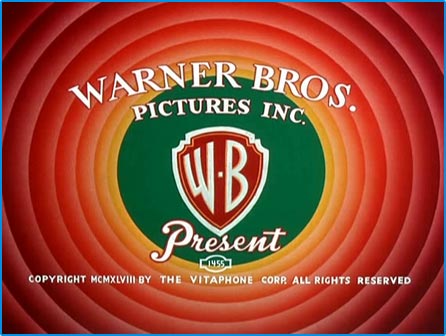By Katy Howell, from social media agency immediate future
“relevance isn’t just about pages—it’s also about relationships” The official Google blog
As a social media agency, we’ve been watching the dynamic relationship between social and search for a while now; and Google’s recent announcement concerning the development of its social search function is indicative of the changing shape of search.
In 2011, search is getting social.
Google has announced that it will now be integrating social results throughout the search engine results pages; noting if friends have shared these links on one of the social media platforms that Google is taking information from (Quora, Twitter or Flickr); and providing users with more control over which of their social media accounts will inform these results.
Google’s social search acknowledges the value of peer recommendation and personal relevance but it depends on a user being logged into their Google account. In other words, it is an add on service or an adjustment to the algorithm. We think that social is affecting search at a much deeper level. Read more…
By Andy Pilkington, WaveMetrix,
As social media becomes an increasingly important and influential marketing tool, more and more brands are competing for consumer engagement within the space. Whether it’s fans on Facebook or followers on Twitter, brands now recognise social media as the next big step in marketing.
There are various techniques and avenues available to help brands grow an online following. WaveMetrix took a look at the various approaches taken by different brands in Q4 2010 in order to analyse what strategies seemed to work most effectively.
• Premium brands are beginning to shape discussion around the lifestyle associated with the brand, rather than their specific products
• Other brands are encouraging product-specific discussion, which tends to drive purchase consideration, but also leads to some consumer negativity
• Campaigns that linked social media back into real world events helped drive engagement with the brand
• Tried and tested competitions and giveaways are continuing to work well
• Some brands are building on existing consumer engagement and beginning to monetise social media Read more…
By Shona Ghosh, RMM
2010 has seen brands becoming more adventurous with social media – partly out of a sense that it’s really exciting and partly as those up at the top realise that good social media can really turn a brand around.
What has been particularly exciting to see is how some brands are really beginning to understand the meaning of ‘social’ – true user interaction versus shiny digital ideas for consumption.
Some, but not all. Angrily, brilliantly satirising BP’s response to the Deepwater Horizon oil spill was ‘Leroy Stick’, the man who set up @BPGlobalPR. In response to the oil company’s sustained social media campaign, Leroy wrote for the Huffington Post advising BP to fire everyone in its PR department. He writes:
“You know the best way to get the public to respect your brand? Have a respectable brand.”
Read more…
, Senior Marketing Manager at Skive runs us through ‘The Future of Social Commerce’ covering topics such as Facebook credits and Geo location, complete with handy stats and case studies. Within these slides you’ll also find more info on the new Facebook Deals – the location-based service that allows you to see what offers are nearby and share deals with friends. Useful stuff!
By Andy Pilkington, WaveMetrix,
We’re all familiar with particular examples of great social media campaigns, but many of us are still in the dark as to what makes these campaigns so successful. To address this problem, WaveMetrix have just released their latest quarterly summary, which details exactly what made Q3 campaigns successful, or not so successful.
The latest Social Media Quarterly from WaveMetrix attempts to pinpoint exactly what made social media campaigns successful or effective during Q3. By taking a look into some of the most interesting campaigns during the last few months, the report concludes that successful Q3 campaigns hinged around the following factors
• Relevance – successful campaigns were always relevant both to what the brand wanted to achieve and to the consumers it tried to reach
• Loyalty – good campaigns leveraged existing loyalty bases to build engagement in their target market
• Targeting – effective social media content often reached out to specific target audiences, even on mainstream sites
• Cultural consideration – brands who failed to take into account cultural norms tended to achieve unexpected reactions, whereas those who properly considered foreign markets tended to resonate with consumers more effectively
• Timely response – brands who averted potential crises responded in a timely and appropriate manner to social media problems and issues Read more…
By Amy Kean, IAB,
Thank heavens for the research release today, from YouTube, which confirms a sneaking suspicion that I – and the IAB Social Media Council – have had for a while. If a brand enters social media… they should tell the world why they’re there in the first place.
That’s obvious, you might say. Simple common sense, some may tweet. Absolutely – I don’t think anyone actually ever claimed that social media was a form of rocket science – but it still doesn’t happen that often. And that’s because there exists an assumption that hasn’t yet been disproved (until today) that just entering into a conversation is enough, that a ‘like’ or retweet is unequivocally fabulous, and that blogger coverage, without a rationale for why you’ve received it, is sufficient.
This research from YouTube (supported by the IAB) highlights the real need for harder messaging in social media content and advertising, showing that a really quite remarkable 60% of people are not yet existing customers of brands they share or ‘like’. They just like them. Now I’m no Rain Man, but that’s a big number. Read more…
Yesterday saw our final session on the IAB’s rising voice in social media course. The installment was rounded up with presentations from Nick Stringer, director of regulatory affairs at the IAB and , senior marketing manager at Skive. Nick took the delegates through why it’s important to be ‘safe’ in social media, covering the all important ASA remit extension that comes into place in Spring 2011. Tom Ollerton, senior marketing manager at Skive spoke about his opinions on whats next for social media with some great examples.
See below to view both presentations in full…
, Head of Social Media at Microsoft Advertising, talks to the IAB about social media from an advertising and product perspective. Kicking off with a simple explanation of what social media is and why it’s so vital for CMOS, she uses her own case study from the Windows 7 launch as a great example of how you can use dialogue with consumers to inform business research and product development. Watch the interview in full below to also find out what future trends she feels will be hitting the social media industry next.
, Head of Digital Strategy at Imagination talks to the IAB about how social media has heightened the brand experience. Discussing the relationship between the consumer and the brand, she outlines the ways in which consumer expectations have been heightened thanks to digital, and the increased feedback that marketers are getting in social spaces. Using case study examples from Debenhams and London Museums, and argues that a successful case study is essential to persuade a brand to take that first step into ‘doing’ social media.
Watch the below video to see the full interview
By Daan Jansonius, Account Manager, SocialMedia8
Warner Bros’ recent influencer program faux pas has been widely publicised and critisised by many social media commentators. Recipient of the irrelevant and badly targeted outreach e-mail Adam Singer shared the incident with his readers on his Future Buzz blog, after which TechDirt and Repution Online among others chipped in their 2 cents too.

Warner Bros made matters worse with an ill thought out response, defending their efforts in a comment saying it was ‘fully WOMMA compliant’. Whilst this may be true, it’s no defense for a campaign to lack basic common sense. However, we prefer to help brands move ahead with positivity and helpfulness rather than scorn and damnation.
So let’s look at where Warner Bros went wrong and how they could avoid a similar PR nightmare next time.
1) The the outreach email
There are two issues here. Firstly, there is a lack of personalisation which is an immediate red flag for most bloggers. Warner Bros claims to have come across Singer’s blog recently which is why he was invited. This claim lacks authenticity when you fail to include the person’s name in the salutation.
Secondly, and more importantly, if they had actually read the blog they would have noticed that Singer’s posts mostly revolve around online marketing. Whilst there may have been posts about online marketing in relation to the entertainment industry, he is not known for sharing his love for the latest blockbusters.
It’s great that Warner Bros is looking to involve their biggest fans through a loyalty program – but you have to make sure you target the right people. These errors point in the direction of a shotgun approach where they fired as much hail at bloggers with a healthy level of influence without any thought about their relevance to the brand and materials.
2) Paying people for blog postings
Paid blog postings have been debated for a long time. Whilst I don’t necessarily disagree with paying for advertorials (if appropriately marked as such), there are two issues here.
Firstly, the fact they are offering bloggers remuniration in exchange for publicity means this is not a word of mouth marketing campaign or loyalty program. The fact they seem to have taken a broad strokes approach with approaching influential bloggers indicates they are more interested in getting attention, not building loyalty. And that’s fine, but it should not be ‘disguised’ as a word of mouth marketing activity.
Secondly, there is no mention of necessary disclosure of the commercial tie-up between the blogger and Warner Bros’ Word marketing team. In both the UK and the USA it is now illegal for bloggers to take payments for posting content without disclosing this financial relationship. To prevent these issues from happening Warner Bros should be completely transparant with their intention, without sending mixed messages. If you are looking to build a loyalty program you have to make sure you target the relevant audience and provide them with great content – paying for loyalty is not a long term strategy.
3) Responding to critisism
It’s great to see that Warner Bros is aware of the conversations surrounding their brand. This should be the first step for any brand to get active in social media. However, their response seemed to fuel the flames rather than turn the situation around. This can be tracked down to two main reasons; 1) many bloggers felt they were hiding behind the WOMMA compliancy rules when common sense should have prevailed and 2) they took a very combative approach, taking the blogger head on.
We have debated some of the issues with this campaign and I’m sure Warner Bros’ intent was genuine, but the blogger’s expressed some agrievances with being targeted for this campaign. And he was right to do so. Instead of digging their heels in WB could have appproached the blogger and discuss the issues he had with this campaign.
Furthermore, WOMMA guidelines are exactly that – guidelines. They provide brands with a walking stick, but this should not prevent brands from using a common sense approach to their social media campaigns and programs. They made a mistake and should have owned up to it, rather than point the finger of blame at someone else.
That’s all folks!





